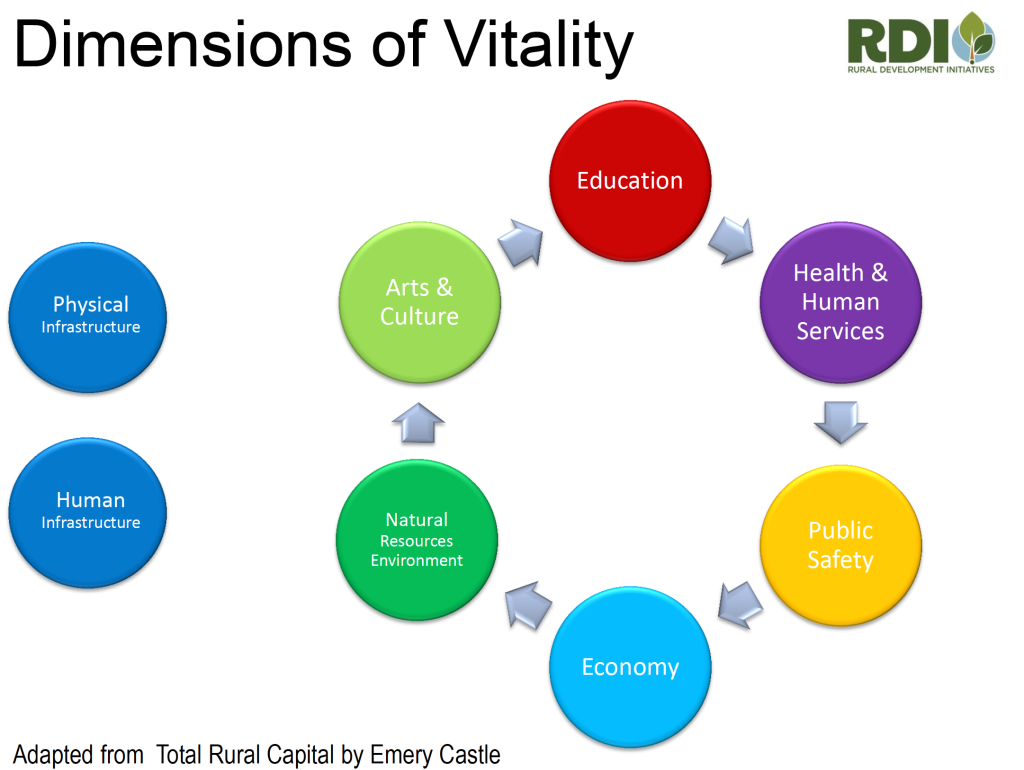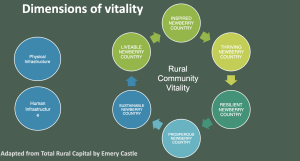
Dimensions of Vital Rural Communities
by Tom Gallagher
Vitality for the Ford Institute is a balance of many factors or characteristics. The Institute gathers all of the characteristics under six headings: health, education, economy, environment, arts/culture and safety. The characteristics are most often correlated, that is they serve each other. For example, a good educational system is supportive of a strong economy and vice versa. All of the categories are considered essential; a community cannot be vital if it lacks any of them. In effect, if one of the characteristics is weak it can undermine the value or potential of others. Typically the best investment is to fix the weak link first.
Each of the six dimensions has its own human, organizational and physical infrastructure. Education, for instance, includes the teachers (human) and administration, classes, programs (organizational) and the equipment, buildings and other prepared facilities such as tracks (physical). The Institute is involved primarily in building the capacity of the human and organizational infrastructure. The human infrastructure is the goal of the Leadership Development classes, which is where the Institute spends nearly 60% of its resources. The organizational infrastructure is the goal of the Effective Organizations classes. Most assistance grants are to develop the capacity of organizations.
As rural communities range widely in size it is not practical for each community to have the same infrastructure for each dimension. Small towns may have a clinic, large towns a hospital. A large community may have a theater while a small one may use the school gym for its theater. What is appropriate depends on many factors and is often debated, such as when a small district threatens to close a small school because of budget challenges. What is required to be vital can require considerable consideration and should involve the entire community.

